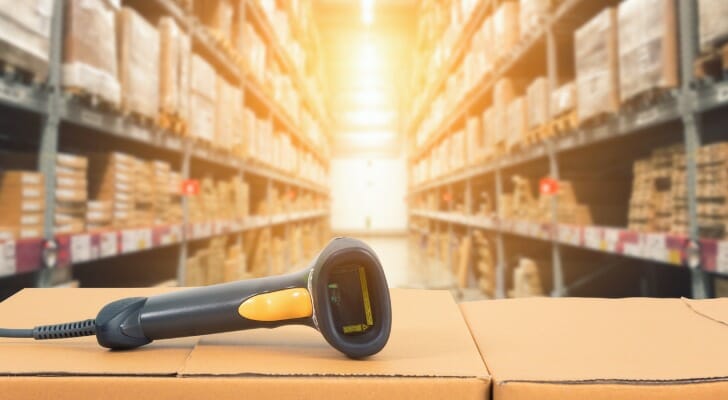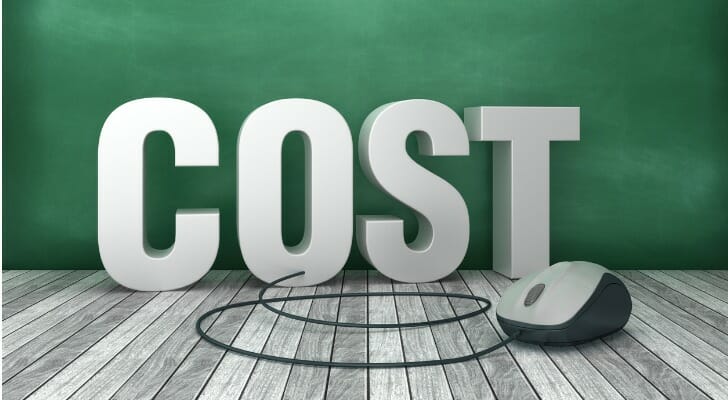 Cost of goods sold (COGS) is the determination of how much it costs retailers, wholesalers and manufacturers to produce the goods they sell. For makers and resellers of products, COGS, sometimes also referred to as “cost of sales,” appears on an income statement where it is central to calculating gross profit. The IRS relies on it to determine a company’s tax bill. Internally, business executives focus on COGS when pricing the company’s products offered for sale. For investors, a high COGS can suggest a cap on potential profitability, while a low COGS can indicate a competitive advantage. Learn how to calculate this important metric here.
Cost of goods sold (COGS) is the determination of how much it costs retailers, wholesalers and manufacturers to produce the goods they sell. For makers and resellers of products, COGS, sometimes also referred to as “cost of sales,” appears on an income statement where it is central to calculating gross profit. The IRS relies on it to determine a company’s tax bill. Internally, business executives focus on COGS when pricing the company’s products offered for sale. For investors, a high COGS can suggest a cap on potential profitability, while a low COGS can indicate a competitive advantage. Learn how to calculate this important metric here.
The COGS of a business indicates how efficiently that business manages its supplies and workforce in manufacturing its product. It includes direct costs like manufacturing overhead, materials and the cost of labor. Service providers like law firms, software engineering firms and consultants don’t use COGS since they don’t manufacture anything.
Costs Used in COGS
COGS does not include all of a company’s costs. It only examines the costs incurred when producing the company’s items for sale. This includes both direct and some indirect costs.
The Internal Revenue Service says direct costs usually included in COGS are:
- Costs of items purchased for resale
- Raw materials and supplies used to make the goods
- Production labor expenses, including supervision
- Cost for parts incorporated in the product
- Freight and container costs for incoming deliveries
Indirect costs included in COGS, according to the IRS, are:
- Rent on manufacturing facilities
- Depreciation of production equipment and buildings
- Production supervisor salaries
- Warehouse costs
- Utilities, such as electricity to power manufacturing equipment
- Non-production worker salaries, such as benefits department personnel
- Packaging labor
- Shipping and freight
Calculating COGS

The exact costs used to calculate COGS and their relative importance vary by industry. A manufacturer of bookshelves, for example, would include direct costs such as wood, fasteners, coatings and the labor of the employees that cut the wood and assembled the shelves. It might also include factory rent, factory utilities and costs for delivery of wood and other materials. Costs such as salaries of salespeople are normally included under selling & general administrative expenses on the income statement instead of COGS.
For retailers, the largest cost is likely the cost of buying items for resale. For a restaurant, the largest cost is likely the cost of food used to prepare meals.
The basic formula for calculating COGS is fairly straight forward:
(Beginning Inventory + Cost of Goods) – Ending Inventory = Cost of Goods Sold.
The calculation requires selecting a time period. This is usually a month, quarter or year. It also requires accurate figures for the value of goods in inventory for the beginning and for the end of the selected period.
As an example, a bicycle shop has $100,000 in goods in inventory at the beginning of the year. During the course of the year, the shop purchased an additional $200,000 in goods for resale. As a retailer, the business had no cost of goods other than acquiring inventory. At the end of the year, inventory was $200,000.
Starting with $100,000 in beginning inventory and adding $200,000 in purchases of more inventory gives $300,000. Subtracting ending inventory of $200,000 produces $100,000, which is the COGS.
COGS can now be used to figure profits by subtracting it from revenue generated by sales of products. Say the business generated $200,000 in sales revenue. Its gross profit is that $200,000 minus the COGS of $100,000. So gross profit is $100,000.
Inventory Considerations
Taking inventory is a key part of calculating COGS. There are three main methods:
- First in first out (FIFO). This inventory method assumes that the first goods sold are the first ones produced or purchased. This can produce a lower COGS.
- Last in first out (LIFO). This assumes the last goods produced or purchased are the first ones sold. It generally leads to a higher COGS.
The Bottom Line
 COGS is a vital financial metric used to help business leaders evaluate profitability, calculate taxes, inform investors and make important decisions such as pricing. While the basic formula is simple, there are a number of variables to consider as well as choices about accounting methods to use. It’s not important for many service providers that do not make or sell products. For instance, attorneys, consultants, designers, programmers and similar firms don’t use COGS.
COGS is a vital financial metric used to help business leaders evaluate profitability, calculate taxes, inform investors and make important decisions such as pricing. While the basic formula is simple, there are a number of variables to consider as well as choices about accounting methods to use. It’s not important for many service providers that do not make or sell products. For instance, attorneys, consultants, designers, programmers and similar firms don’t use COGS.
Tips for Investing
- Consider working with an experienced financial advisor if you need to figure COGS for your business or analyze it for a prospective investment. Finding a financial advisor doesn’t have to be hard. SmartAsset’s free tool matches you with up to three vetted financial advisors who serve your area, and you can interview your advisor matches at no cost to decide which one is right for you. If you’re ready to find an advisor who can help you achieve your financial goals, get started now.
- Net income indicates how profitable a business is so it’s important both to business owners and investors seeking to gauge the value of a company’s shares. To get this key metric take the gross profit and subtract eligible deductions and taxes paid. An easy-to-use federal income tax calculator will aid you in making these calculations.
Photo credit: ©iStock.com/af_istocker, ©iStock.com/porcorex, ©iStock.com/cagkansayin